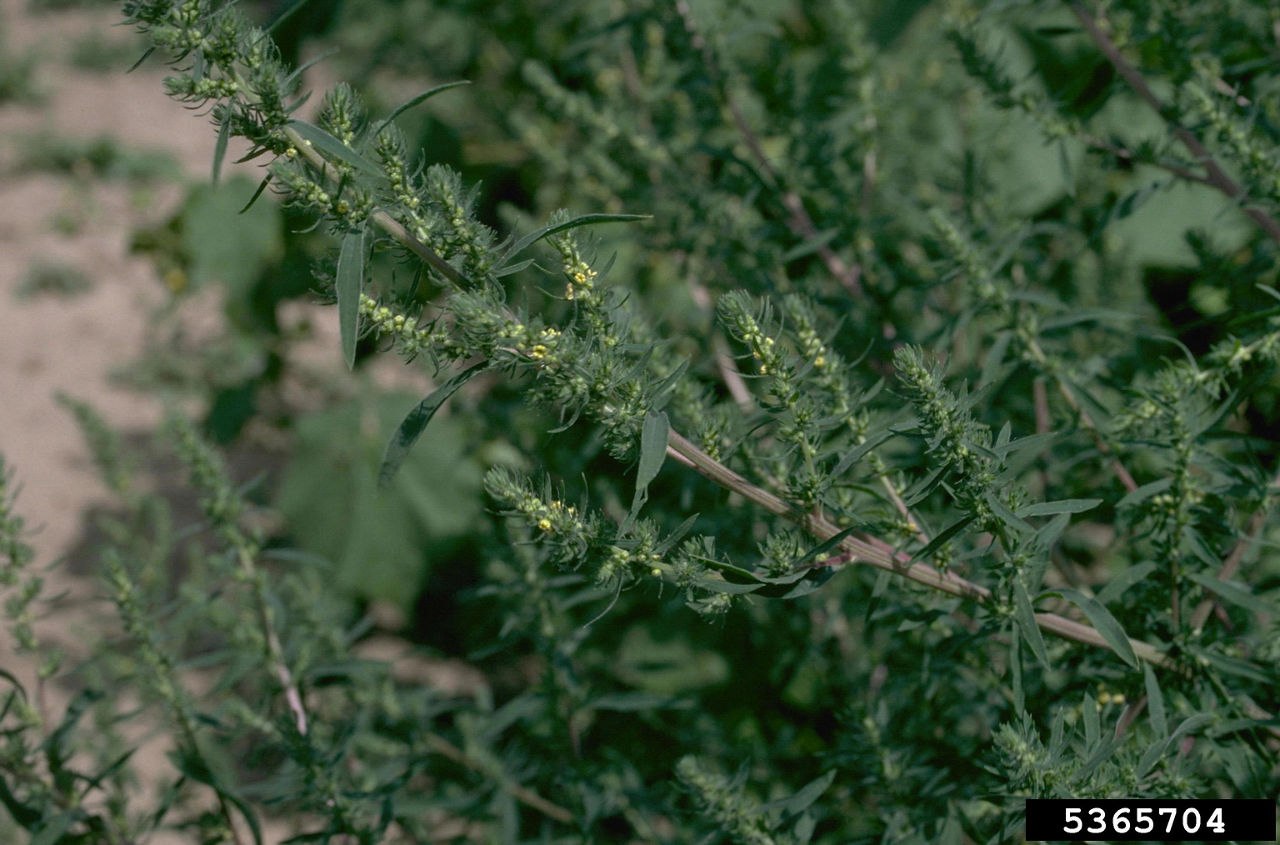3 MIN READ
Kochia Management in Corn
May 26, 2022
Kochia (Bassia scoparia) is a problematic, summer annual broadleaf that reproduces by seed. Other common names include summer cypress and burningbush.1 After maturity, it is often referred to as a tumbleweed when the stem snaps and it rolls across fields with the wind.
Depending on growing conditions and surrounding competition (crop, wasteland), kochia can be a robust plant of six feet or more and upright under competition or three to four feet and bushy when competition is absent. Kochia is tolerant of heat, drought, and saline soils; therefore, it can be found thriving under growing conditions that other plant species are unable to survive. Its survival under poor growing conditions can be attributed to rooting depth and width that can extend to 16.4 feet and 22.9 feet or more, respectively.2
A kochia plant can produce 15,000 to upwards of 25,000 seeds/plant or more. The seeds are dispersed by harvesting, tillage tools, wildlife, and by the tumbleweed factor. Most seeds die within one year; however, viability can be two to three years. Because of early spring germination at temperatures around 35° to 39° F, kochia seedlings can become large and established before other weeds germinate. Though most seeds germinate in the spring, it is not unusual to see seedlings throughout the growing season.1
Seedlings form a small rosette and have thick, dull-green leaves, and the cotyledon undersides are usually bright pink or magenta (Figure 1). As the plants grow, the leaves become lance-shaped, pale green, and are covered with hairs (Figure 2). Kochia flowers are inconspicuous, green, and in clusters up to two inches long and occur at the end of stems and in leaf axils (Figure 3).



Management
Kochia can be difficult to manage in corn because of the quick early growth, lack of or limited herbicides for in-season use in corn, and herbicide resistance (Figure 4). By two inches in height, kochia roots can be nearly six inches deep and below the reach of typical herbicides in drier climates with little rainfall after application. Herbicide resistance in kochia has been verified for Group 2 (ALS) herbicides, Group 4 (dicamba) herbicides, Group 5 (triazine herbicides), and Group 9 (glyphosate herbicides). Additionally, there are kochia populations with verified resistance to multiple herbicides – either SUs and atrazine or SUs and glyphosate.3

Managing kochia in fields to be planted to corn should begin early. If fields had kochia the prior year, the potential is very high for kochia to be present the following year. When soil temperatures warm above freezing, scouting should be underway to identify and verify kochia germination and density. Tillage and pre-plant herbicides are two methods to help control early emerging kochia. Burndown herbicides to consider may include glyphosate, 2,4-D, dicamba, and atrazine. Tank mixes of two different modes of action (MOA) herbicides should also be considered to help manage herbicide resistant plants. Herbicide labels must be read to determine if the herbicide is a labeled product for the geographic area. Efficacy after application should be monitored to determine if resistant kochia plants are present. Cultivation may be an in-crop management tool to help manage resistant escapes.
Integrated Pest Management (IPM) methods, including the rotation away from corn and use of labeled herbicides in the rotational crops, can be used to help manage kochia. Rotating to alfalfa or other haylage crops that involve mowing helps prevent kochia from setting seed and with seed viability being one to two years, elimination from the field has a high probability.
A weed survey conducted by Manitoba Agriculture found that kochia germination under no-till compared to conventional tillage was reduced resulting in 0.4 plants and 16.3 plants per 10.8 sq ft, respectively.1,4 This may be because kochia is a shallow germinator and favors drier, warmer soils which is conducive to conventional tillage.1 Therefore, switching to no-till may be an IPM option to help manage kochia.
Fallowing can be an IPM alternative as well. Under-seeding sweet clover with the crop prior to a fallow year and seeding a cover crop can compete with kochia. Sweet clover residue has demonstrated a suppressive effect on kochia growth when seeded as forage or green manure on fallow land. Additionally, sweet clover on fallow ground was found to reduce kochia germination by 80 per cent or more the following year compared to conventional fallow systems.5
Laudis
Laudis® Herbicide can be used postemergence in corn to manage kochia including biotypes resistant to herbicides Group 2, 4, 5, or 9 when applied at 3 fl oz/acre along with the recommended adjuvant system. Best control is achieved when kochia is less than 6-inches in height and actively growing. Laudis® Herbicide can be use in a tank mix with atrazine for additional weed management.
Sources:
1Managing kochia. Agriculture. Province of Manitoba Agriculture. https://www.gov.mb.ca/agriculture/crops/weeds/print,managing-kochia.html.
2Kochia. Environmental Science. Bayer. https://www.environmentalscience.bayer.ca/vegetation-management/whattocontrol/kochia.
3Blackshaw, B., Beckie, H., Hall, L., Low, R. Glyphosate-resistant kochia. Agriculture and Agri-Food Canada. https://www1.agric.gov.ab.ca/$Department/deptdocs.nsf/all/crop14324/$FILE/au-2013-blackshaw-glyphosate-resistant-kochia.pdf.
4Comapring zero and conventional tillage. Province of Manitoba Agriculture. https://www.gov.mb.ca/agriculture/crops/weeds/comparing-zero-and-conventional-tillage.html.
5Glyphosate resistant kochia. Agriculture Knowledge Centre. Saskatchewan. https://www.saskatchewan.ca/business/agriculture-natural-resources-and-industry/agribusiness-farmers-and-ranchers/crops-and-irrigation/weeds/glyphosate-resistant-kochia.
Casey, P. A. 2009. Plant guide for kochia (Bassia scoparia). USDA-Natural Resources Conservation Service, Kansas Plant Materials Center. Manhattan, KS. https://www.nrcs.usda.gov/Internet/FSE_PLANTMATERIALS/publications/kspmcfs9630.pdf.
Web sites verified 4/21/22. 1223_27400